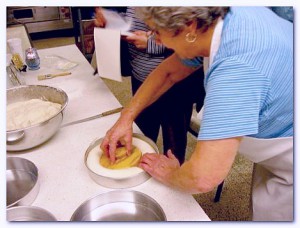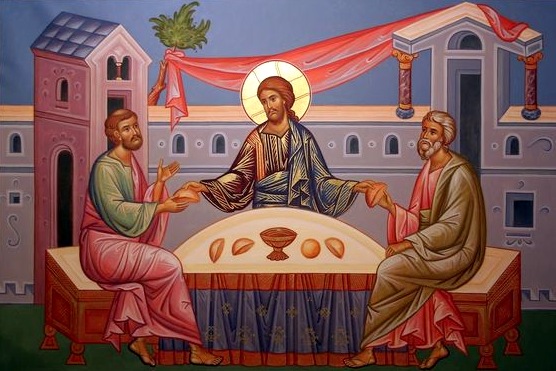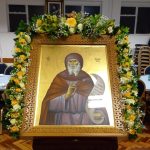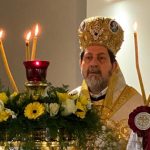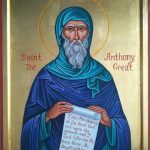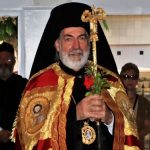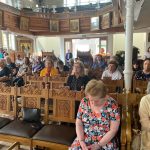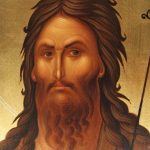The Proskomidi
by Archimandrite Ephrem Lash
Part 1
In St Luke’s Gospel we read that on the first Easter Sunday two of Jesus’ disciples were walking from Jerusalem to a nearby village, called Emmaus, discussing sadly the events of the past few days. Jesus joined them, but they did not recognise him. As they walked he explained to them how all that had happened to him had been foretold in the Bible.
When they reached the village they persuaded him to stay and eat with them. As they sat at the table, Jesus took bread, blessed it, broke it and gave it to them. At this moment he vanished from their sight and they realized that it was Jesus. They hurried back to Jerusalem to announce the good news that Jesus was alive, that he had risen from the dead. It is this journey to Emmaus that we take every time we take part in the Divine Liturgy in church.
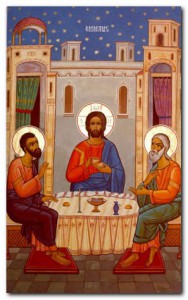
The Supper At Emmaus
During the coming months we plan to give you a brief explanation of what happens on the journey of the Divine Liturgy and of what part we ourselves should play in it. As the story in the Gospel makes clear, the Liturgy consists of two main parts: the Liturgy of the Word, often called the Liturgy of the Catechumens, and the Liturgy of the Lord’s Supper, often called the Liturgy of the Faithful. In the old days only those who had been baptized were allowed to stay for the Liturgy of the Faithful. Those who were still being instructed, or, to use the Greek word, catechized, the Catechumens, could only attend the first part of the service. They were solemnly dismissed by the Deacon before the Cherubic Hymn.
Before the Liturgy begins there are preparations to be made. The most important is spiritual preparation. The service books tell the clergy that before celebrating the Liturgy they must have no enmity towards any one, following our Lord’s words in the Sermon on the Mount,
‘So then, if you are bringing your offering to the altar and there remember that your brother has something against you, leave your offering there before the altar, go and be reconciled with your brother first, and then come back and present your offering.’
This command of our Lord’s does not only apply to the clergy, but to all of us who come to take part in the Liturgy. The clergy also get ready by putting on their vestments, washing their hands and preparing the bread and wine. This they normally do while the morning service of Orthros, or Matins, is being sung, or while the Hours are being read. Although this preparation is done out of sight of the congregation, it is important to have some idea of the meaning of this part of the Liturgy. As Christ did at the Last Supper, the Church uses bread and wine mixed with water. In the Orthodox Churches we use leavened bread for the Liturgy, because in St John’s Gospel the Mystical Supper and the Crucifixion took place before the Jewish Passover.
Large Prosfora
The Western Churches in general use unleavened bread, following the other Gospels, which say that the Last Supper was the Passover Supper, when only unleavened bread is allowed. At one time this difference of practice often became a point of violent disagreement between East and West. Greek churches normally use one large loaf, while the Slav churches use five small ones. On Mt Athos it is common to use two. We mix water with the wine because in the ancient world it was usual to drink wine diluted with water. Theodoret says that one of the reasons Noλ did not commit a sin by getting drunk was that he did not know that one should water one’s wine before drinking it. Not to do so was a mark of a binge drinker.
The bread for the Liturgy is usually baked by members of the community as part of their service, or liturgy, to God on behalf of the community.
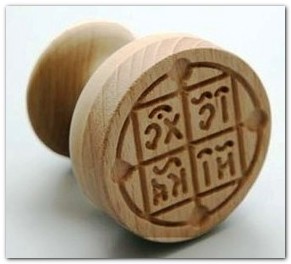
Stamping the Seal on a large Prosfora
